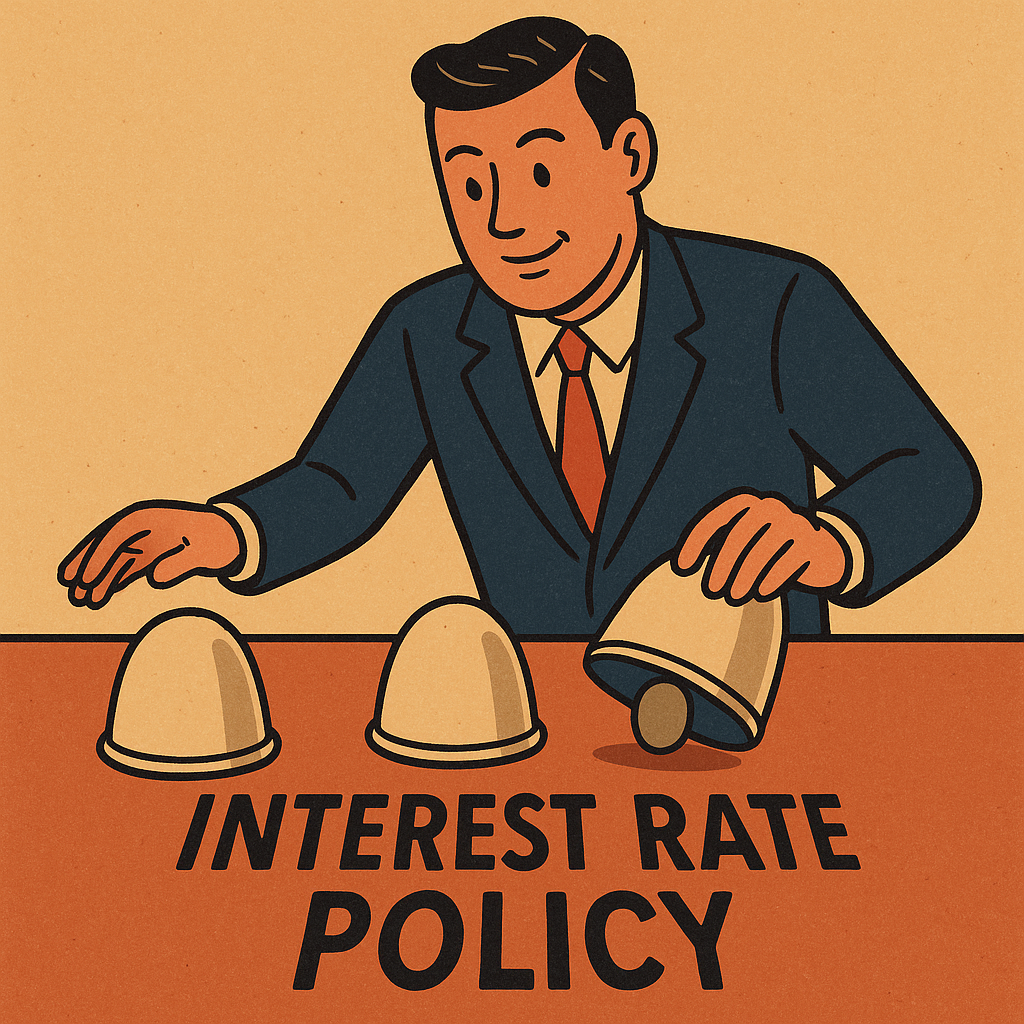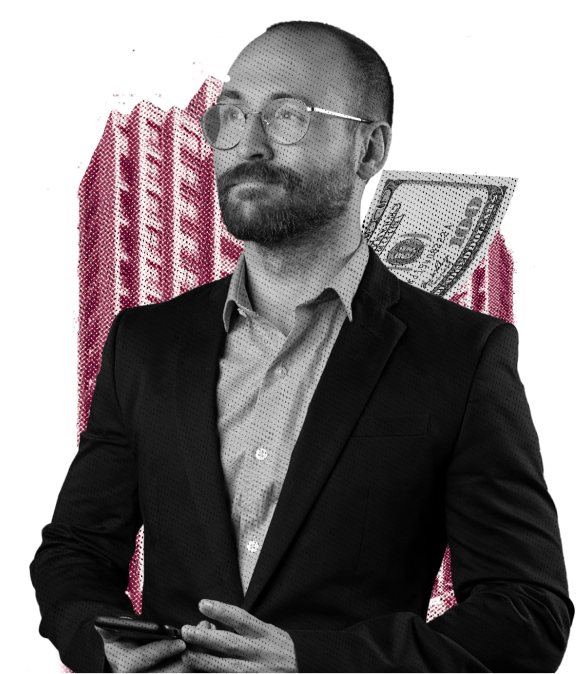Stocks are rallying, the deficit is rising, and everyone wants cuts. Just another day at the Fed.
KEY TAKEAWAYS
-
Interest rates affect stocks through borrowing costs, valuation math, and macroeconomic impacts
-
Present value math makes rate hikes reduce stock values—even if nothing else changes
-
The Fed’s dual mandate is jobs and price stability—not helping Treasury with deficits
-
Kugler’s resignation opens a path for Trump to appoint a dove and shift the FOMC balance
-
Doves and hawks can change—Powell, Waller, Kashkari have all evolved
MY HOT TAKES
-
Wall Street’s obsession with the Fed is emotional, not just mathematical
-
Kugler’s resignation could be a big deal—but not a guaranteed game-changer
-
The President wants cuts for fiscal, not monetary reasons
-
Dovish Fed members are political tools—until they’re not
-
Markets are still addicted to rate cuts—despite not fully understanding why
-
You can quote me: “No company–no matter how sexy or shiny–can do well if the economy is contracting.”
Change of heart. Wall Street has good reason to be obsessed with the Federal Reserve Bank. The Fed, amongst many other things, controls interest rate policy. Interest rate levels impact stocks in many ways. Practically, corporate borrowing is tied to statutory interest rates–controlled by the Fed–directly impacting debt service and profitability. This is the most tangible and, interestingly, the least impactful in the current market regime.
Another way in which interest rates impact stocks is more theoretical in nature. I first learned the equation–the mother equation–in 1985 as an undergraduate econ student. I am, of course, referring to the present value equation. Everyone educated in finance or economics knows this equation. It is, I can assure you, an extremely important one. We learned, as freshmen, that we can come up with the value of a stock by analyzing some form of its future expected returns and bringing them into current dollars.
We also learned very quickly that it was no easy task and that the number we came up with rarely agreed with where the stock was actually trading. Aside from the near-impossible task of accurately forecasting cash flow beyond one quarter, and the even more-impossible task of assessing a company’s terminal value, a critical bit of the equation is the cost of equity, which is in the denominator of the present value equation. Cost of Equity is directly tied to the Risk Free interest rate. That interest rate is heavily influenced by Fed policy. Knowing this, and knowing that it is in the denominator of the equation, you now know that if it gets bigger, the present value of the company gets smaller, and vice versa. It’s just math, silly. 🤓
This is all really theoretical, and unless you are an M&A Banker or an equity analyst, you would never come across it. For the record, it is easy to manipulate to come up with a desired value, which is probably the reason that most portfolio managers, stock traders, AND YOU quickly forget the equation. And that was the case until late in the pandemic when it became clear that interest rates were going higher… and fast. The Fed raised the interest rate charged by banks to banks for overnight borrowing. Did this mean that Microsoft would sell less Windows licenses or xBoxes? Of course not, but that didn’t stop its stock from selling off by some -37%. The excuse? Rising interest rates… simple math. The point here is that stock investors during that period became even more sensitive to interest rates and the Fed, and that sensitivity persists today–even though most folks don’t even understand the theoretical math behind it.
That brings us to the third reason. There is a very real reality that no company, no matter how sexy or shiny, can do well if the economy is contracting. Or even more tangibly, if the labor market is falling apart. If people are afraid of losing jobs they cut back on spending. If people lose their jobs, they have less money to spend. If you can’t afford a new computer, that is one less Windows License that Microsoft will sell this year. The more licenses Microsoft sells, the more folks it can afford to employ. If Microsoft can borrow money cheaply because of low interest rates, it can–in theory at least–also afford to hire more people due to lower debt service expenses. It is a weird and twisted cycle, but it kind-of works. Though this is at the core of it all, investors understand that loose monetary policy is good for the economy and the markets, which is why any dovishness by any Fed is always bullish. It’s not math, it’s just the way things are.
Now let’s move into the world of reality in the summer of 2025–right now. Markets have rallied hard since a painful pullback earlier in the year. Many would say that stocks are priced to perfection. That is Wall Street terminology for saying that stocks are expensive, and they certainly are. In order for stocks to justify these levels and go higher, traders need another catalyst, and that spark can be Fed rate cuts, which is why markets are so obsessed with the Fed these days. The US Treasury (1500 Pennsylvania Avenue NW, Washington, D.C.) is some 250 miles away from the iconic New York Stock Exchange (11 Wall Street, New York). At the Treasury, they too would be happy to see interest rates lower, but for a completely different reason than at the NYSE.
The Treasury borrows LOTS of money to keep the Government going. No different from you and me, the Treasury’s monthly payments are less when interest rates are lower. That means, in real-world terms, that the $1.5 to $2 trillion borrowed by the Government will cost it less if interest rates were lower. Lower interest rates directly affect the level of the Federal deficit. One might even argue that lower debt service allows the Government to spend more money in service of its citizens. Others may argue that it allows the Government to collect less taxes and provide the same level of service. 🤣 All this discourse aside, the administration would like rates to be lower for these very reasons. Of course, the President would like to stimulate the economy as well. Who doesn’t want to preside over a booming economy–it simply looks better in the history books–just ask Jimmy Carter or Herbert Hoover.
So, it is clear why President Trump is so avidly pressing Jerome Powell to lower interest rates. To be fair, it is not completely irresponsible. Interest rates are on the high side and a small cut could save the treasury lots of money. Would that small cut cause tariff-based inflation to become worse? You can answer that for yourself. That said, it is not the Fed’s job to help the Treasury fund its deficit spending. You know the rules: strong labor market and stable prices. Can the President add a third mandate? Technically, with the help of Congress? Yes, but could he pull it off? It would be a stretch given the fiscal hawks in the Republican caucus.
The President could, however, appoint known doves to the FOMC. If they are confirmed, they could vote in favor of more accommodative monetary policy. That is a long process and it is governed by terms set by The Federal Reserve Act of 1913. The President simply has to wait for a term to end in order to appoint a replacement, and if that replacement is confirmed by the Senate, he is good to go… well maybe. Yesterday, we learned that FOMC Governor Adriana Kugler is resigning, despite her term ending in January. This gives the President an opportunity to appoint a dovish replacement. Kugler is a known hawk. But that may not be a fool-proof plan.
Let’s remember that the President’s arch-nemesis banker is Jerome Powell, whom he nominated. It is clear that Powell is unwilling to bend to the wishes of Trump. Christopher Waller, also a Trump appointee, is a different story. Waller is considered the most dovish FOMC member and also being considered as a replacement for Powell. That makes him dovish on steroids as his job application would be torn up would he utter even the slightest hawk squawk, and Waller was a dissenter in the last FOMC vote.
But there is an important story in this. You see, Waller wasn’t always a dove. At one time he was considered a staunch hawk. He was a St. Louis Fed economist working for uber-hawk, former FOMC member James Bullard. Remember him? Sure you do, he caused much stress for you with his market-tanking hawk talk when he was the St. Louis Fed President. The point here is that FOMC members can change. Minneapolis Fed Head Neel Kashkari is another notable shape shifter. He started life as the most dovish FOMC member (2016). He dissented multiple times against rate hikes in 2016 and 2017. By 2022 he became a staunch hawk and inflation fighter. He even called for rates over 6% in 2023! He has since become a bit more pragmatic and is considered neutral today.
Interest rate policy is important for many reasons, as you can see. That is precisely why the White House is so focused on what is happening down the road at the Fed. The President will certainly do all he can to influence interest rate policy. Short of changing the Fed’s mandate, which is unlikely to occur (though he is likely to try), the President can only keep his jawboning on full strength and attempt to fill opening slots with more doves. Kugler’s resignation may give the President an opportunity to install a dove. That may give him one more vote in favor of rate cuts, in addition to the existing two, but beyond that there may be no other guarantees, as we have learned. However after last Friday’s abysmal labor print and revision, the Fed may bend to the President’s whims after all. That would be right within the Fed’s real dual mandate. Imagine that, the Fed doing its job.
Be patient and don’t hyperfocus on the wrong things. Yes lower interest rates technically, theoretically can make the stocks in your portfolio more valuable. Yes, a move to lower rates by the Fed would certainly goose equity markets. Yes, lower interest rates would lower the deficit by lowering the Treasury’s debt service expense. But, will lower interest rates help NVIDIA sell more chips? You know the answer to that question.
YESTERDAY’S MARKETS
Stocks rallied yesterday as speculation over rate cuts soared in the wake of last Friday’s weak labor numbers. Fed Funds Futures now predict a 100% chance of 2 rate cuts before year end with a 50% chance of a third. 2-year note yields slipped further, confirming Friday’s drop–directly the result of increased bets of sooner and more cuts.


.png)

